Crowdfunding has become an essential part of the game development process. As PC and mobile devices have grown in popularity, so have the number of available platforms for gamers to contribute to projects they’re excited about.
Both Kickstarter and Indiegogo are two of the most well-known crowdfunding websites, but how do you choose between them? We should note that both sites offer different tools to help developers run successful campaigns.
While Kickstarter requires project creators to pitch a specific idea, Indiegogo gives them more freedom over what kind of money they can raise – which typically makes it easier for a project to gain exposure and momentum early on.
To take advantage of this extra boost, though, you’ll need to allow backers to pledge money without even knowing what your project is about.
This can be risky for both the creator and backer. While a successful campaign does mean more funds, it also means you lose some of your creative freedom and control over development; think of it kind of like hiring a financial advisor who gives you bad advice to serve their interests better.
Just as most people would avoid that scenario, many developers aim to maintain complete creative freedom over their projects, bringing us back to Kickstarter’s model. They focus on hardware and software, while Indiegogo allows users to fund nearly any project they want (including games).
The Pros & Cons of Kickstarter
Kickstarter is one of the most popular and successful platforms for raising money.
Ian Peterman, CEO Tweet
The main pro for Kickstarter is that it gives businesses and individual people an excellent opportunity to create new products, thus allowing for more innovation within the industry as a whole. However, Kickstarter has recently made changes to not simply seek financial assistance from other companies to help fund their projects.

Additionally, if they raise 100 million dollars, this could lead to people or companies abusing Kickstarter for financial gain. Kickstarter states that it is “a funding platform for creative projects,” meaning that the sole purpose of Kickstarter is not to raise money but instead promote creativity.
Thus far, it has been a great success; some unique products funded through Kickstarter include Double Fine Adventure, OUYA, and Oculus Rift. The creators on Kickstarter have complete control over their projects which allows them to create what they want.
Unfortunately, when trying to create something new and innovative, large companies are often interested in stopping them from preventing competition because if the product is successful, it will hurt the competitor’s profits and decrease their reputation.
However, if a company works with Kickstarter and successfully creates a new product, then this decreases the likelihood of large companies trying to stop them from doing so because they know that if they do, then Kickstarter will most likely take notice.
Kickstarter gives many creators, including artists and musicians, a platform to present their work to potential consumers without spending money on advertising or production costs for their products. The users pledge money based on how interested they are in seeing the end product of whatever it is being proposed. This allows people who may be struggling financially but are interested in supporting different projects due to personal reasons.
Pros of Kickstarter

Kickstarter has one of the largest customer bases, so getting on their platform means more people will see you.
Ian Peterman, CEO Tweet
Kickstarter is a crowdfunding platform where companies and individuals can pitch an idea to the public in order to help them attempt it.
The creators of the projects must offer rewards for those who pledge money to their project, and this is generally done by pledging certain amounts of money that will get you certain items or services.
Here are some of the advantages if you choose Kickstarter as your crowdfunding platform:
You can start a project and get the funding to make it happen
Kickstarter is an easy way to pledge money for your favorite projects
People have built entire companies by using Kickstarter
If you are unsuccessful on your first attempt, it’s easier to try again
Cons of Kickstarter
The two things that push people away from Kickstarter are more strict requirements and you have to meet your minimum goal in order to keep the money.
Ian Peterman, CEO Tweet
You already know that Kickstarter is a funding platform for creative projects. A person who wants to make an album, write a book, or film a movie can post their idea on Kickstarter and set up an account with the site.

If people like the project, they can pledge money to help it come to life. The artist sets a goal that they hope to reach to fund their project fully. In return for selling money, backers receive different rewards depending on how much they give.
Kickstarter can be an excellent crowdfunding platform for artists. Yet, here are some disadvantages when you use the platform:
Kickstarter campaigns can be an expensive campaign
It’s a complex platform to get started on for creating your first campaign.
There are many costs involved in running a successful Kickstarter campaign.
Potential backers may not understand the product when looking at the page.
The Pros & Cons of IndieGoGo

IndieGoGo is a great alternative to Kickstarter and has been used by many people to raise money through pre-selling their products.
Ian Peterman, CEO Tweet
Indiegogo, a crowdfunding platform, has a different approach from that of Kickstarter. Indiegogo offers more flexibilities and features than its rivals but also lacks some perks. So let’s take a look to see how it stacks up against the other ‘big name in crowdfunding.
Pros of IndieGoGo
IndieGoGo is an online crowdfunding platform that helps individuals, groups, and businesses gather funds for their ideas. Indiegogo also helps people raise funds for humanitarian or social causes, including medical expenses and educational donations.
It’s a trusted and secure platform that offers peace of mind when it comes to giving your hard-earned money to entrepreneurs you believe in
They are a global company with offices all around the world who provide innovative products that people need and want
All project creators must pay a 9% fee to Indiegogo (which goes to the company)
Projects are protected for up to $500,000 (depending on the amount raised), which is a lot more than most other crowdfunding sites.
Minimum campaigns start at $0
Video introductions for your campaign videos
A free mobile app gives you 24/7 access to your campaign page, so you don’t need internet access, all easy to use and responsive on all devices.
It’s obvious how the money you donate will be used.
Multiple options for donating, such as one-time donation or monthly
Cons of IndieGoGo
A crowdfunding website that allows individuals to raise money for personal causes, including creating new products. IndieGoGo has helped several individuals to raise funds for a project. However, even if the platform is almost perfect, here are some disadvantages of IndieGoGo:
If you back a project and it doesn’t meet expectations, you don’t get your money back
Pledges can only be made in one currency
Projects with “free shipping” will have an additional fee for international backers
High risk of not achieving the funding goal
Conclusion
Kickstarter is praised for its high levels of legitimacy compared to similar sites like IndieGogo or Razoo. The site encourages transparency regarding projects that are admitted into their system. It asks for more than just a description and thumbnail image; it encourages video pitches.
This ensures minimal risk for both creators and backers and thus gives Kickstarter a stigma of legitimacy. IndieGoGo allows any project to be hosted on its platform but then will later encourage them to make videos or other forms of promotion about their product once they are running campaigns through them.
You can choose the crowdfunding you need from these two. The list here will help you with which one to choose. You will need to get what you need for your campaign.
Your Next Steps
Campaign
GoFundMe VS. GoGetFunding: Which is a Better Crowdfunding Platform?
Related Conscious Design BLOG Posts
3 Reasons you Should use a Firm and Not Just a Freelancer
A firm (like the Peterman Firm) can grow with you because it will have a team.
5 Tips to Creating Your Product Launch Plan
NASA isn’t the only place that should have a launch plan! After all of your time and money spent polishing your product the launch is a crucial step between your investment and your profits- NOT something you want to wing. It may feel like the end of a development process but it’s also the beginning of your next phase of business. At the Peterman Firm we support you through this stage, because creating a product launch plan can make or break a product in the market. We’ve seen many products flop because they didn’t have a plan at all. These are things you’ll need to be thinking of whether we help you or you launch on your own. Run the numbers When you have a final design that has been prototyped and you are looking to manufacture, you should be getting quotes from manufacturers for full production. Look at every cost you might have and give yourself an idea of what it is going to take to buy the first 100, 1,000, or even 10,000 units of your product. Knowing your numbers will help if you need to get financial help with the launching of your product. Have backup suppliers As any good developer or sourcing agent should tell you, you need backup suppliers. I’ve see production lines go down because a company didn’t get a backup supplier for a single bolt. Without the bolt, the product wasn’t made. Having primary, secondary, and even tertiary suppliers is important to make sure your products are made in time and you are able to deliver. We work with our clients to ensure multiple sources are provided for projects. Sourcing is a very important part of developing your product. Decide your launch platform This doesn’t just mean crowdfunding. Is your product going into large box stores, online marketplace, your own website, or some type of crowdfunding/launching platform? This can help decide what quantities you will be ordering in, and your marketing strategy. Are you going to use Amazon or another ecommerce site not run by you? If you are using a crowdfunding platform, there are definite differences and you need to research similar products and which is best for your industry and market. Set realistic goals It’s a good rule in general, but make sure that your goals are measurable and achievable. Especially while you are going through the process of launching an entire new product, keeping focus and having success happen is important. have a marketing strategy You need to know the who, where, and how of your marketing. There are lots of templates and website dedicated to discussing marketing. Who are you marketing to? It may be someone other than the user (such as baby toys). Where are you marketing? Online, radio, TV, billboards, etc. How are you marketing? Paying someone else, friends, or doing it all yourself? It doesn’t matter, just know what you are doing. BONUS: Keep your product launch plan flexible Don’t forget to create the actual plan! Just kidding, I’m sure you remember that. A quick note on plans, though. They never survive contact with the real world, so keep it flexible. Especially if you are a bootstrapping startup. Keep these things in mind as you create your product launch plan. This part of your project is something you want to start on as early as possible. As a last tip, make sure you have the right partnerships. They can bring you down or raise you up, and are largely outside of your direct control. As a full development firm instead of just a freelancer, we link our clients with the best possible partners for every stage of the process. Your Next Steps Struggling to create your own plan? Sign up for our free tutorial and learn about our course 4 Weeks to Launch + free tutorial Impressive Products Why Product Demos Must Go Beyond Impressions better product demos Related Conscious Design BLOG Posts Author Mr. Peterman
What is Design for Manufacturability?
Logically, you could figure out what Design for Manufacturability means in a broad sense. What does it really mean for you and your product? Design for Manufacturability, or DFM for short, is where Design meets Production. The DFM process takes a design and produces a final design that can be manufactured properly, and at the desired cost. This step is often skipped by those developing their first product. They end up costing more. Investing more on time and money than it should. We’ll go over some of what DFM does for your product and why it is a very key component to developing a great product. Manufacturability This is the first step in DFM. An engineer or designer takes a design and reviews it to ensure the product can be manufactured as efficiently and effectively as possible. Draft angles for injection molded parts, machinable areas for CNC, stacking tolerances, fit checks, and many more items are part of this DFM checklist. BLANK Ian Peterman, CEO Tweet Costing This is where things can get interesting, such as actually increasing part count, decreasing reusable parts, etc may be required to put a product into a certain price window. Costing looks at every cost of a product, from hardware selections, country of production, materials, and how each part needs to be made. A Sourcing Agent is closely tied into this part of the process, and works with the designer through this process. Part Count BLANK Ian Peterman, CEO Tweet How many parts does it take to make your product? I’ve worked on products ranging from just one to the thousands. A part count is a balancing act, sometimes you can make 4 parts into 1, but the cost would be 10 times greater. The part count is an easy way to estimate product complexity, assembly costs, et. Usually more is more expensive, and so a lot of work can be done to decrease the part count, make assembly easier, and take less time. Reuse and Replacement For those businesses who are sustainably minded, which every business should be, designing a product for reuse is something that happens in the DFM stage. Which components can be reused, which need to be replaced, even what parts can be recycled or not are also influence in the DFM process. Material and Finish blank Ian Peterman, CEO Tweet DFM also looks at what materials and finishes are used in a product. Sometimes a material might be chosen that doesn’t work well with a certain manufacturing process or is extra expensive. Changing a material, or finish can change the perceived quality, actual quality, and the cost of a product drastically. Lead time is also influenced by finishes as they add extra time to production. Lead Time A lead time of a product determines how quickly a business can turn its manufacturing investment into a profit. If it takes 10 weeks to produce a product, that means a business is going to wait at least 10 weeks before it gets paid. Decreasing lead time also falls within the DFM process. Shorter lead times mean quicker product turnaround, as well as usually less costly. Through selecting processes, materials, and finishes, the DFM process can save businesses from having long costly lead times on their products. Your Next Steps manufacturing Products Kickstarters and Manufacturing: What to Pay Attention to manufacturability Conscious Design Choosing a Manufacturer choose a manufacturer Related Conscious Design BLOG Posts Author Mr. Peterman


